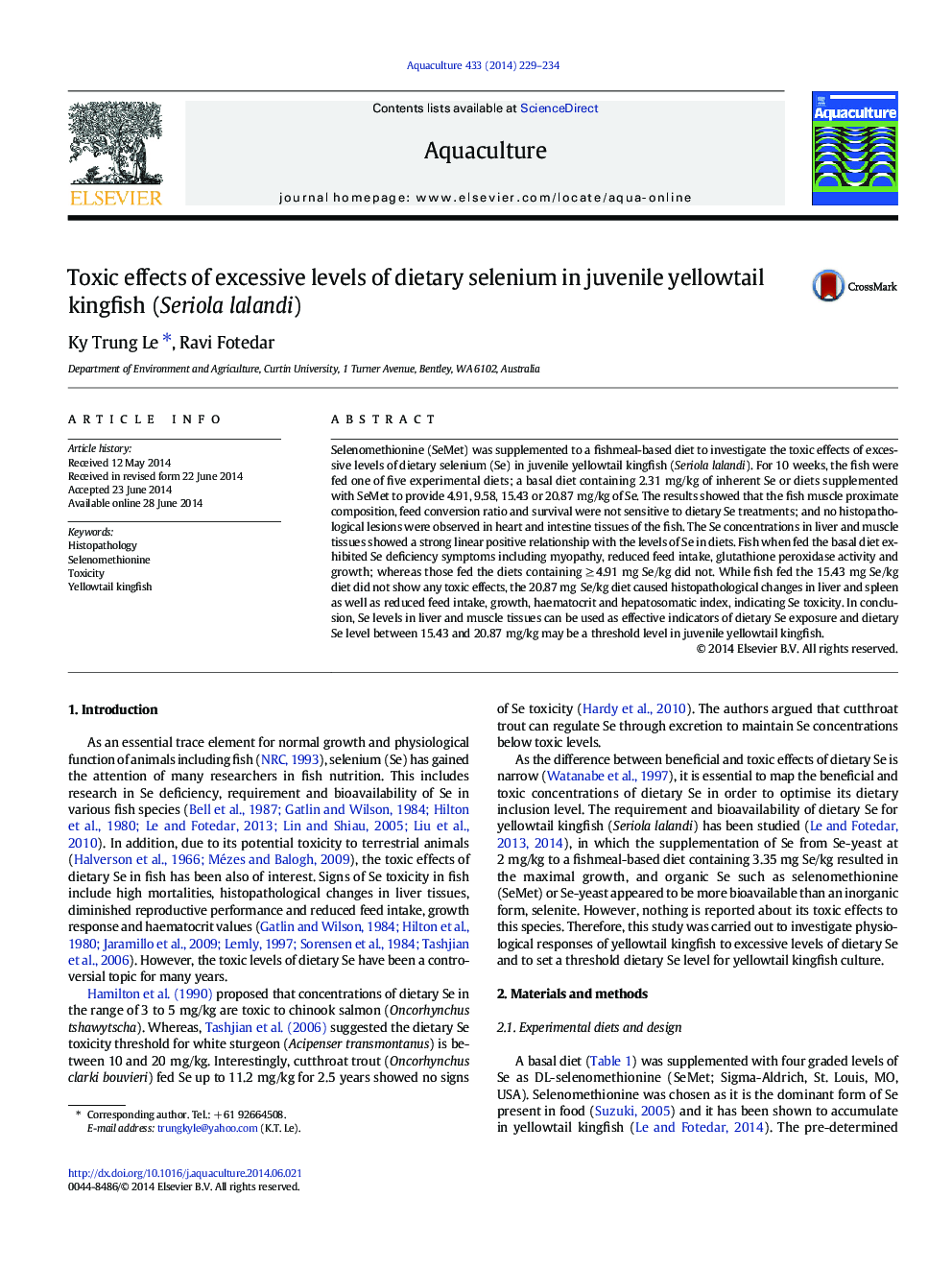| Article ID | Journal | Published Year | Pages | File Type |
|---|---|---|---|---|
| 2421882 | Aquaculture | 2014 | 6 Pages |
•Se deficiency symptoms were observed in fish fed the diet containing 2.31 mg Se/kg.•Dietary Se at 20.87 mg/kg caused detrimental effects to yellowtail kingfish.•Toxic threshold of dietary Se for yellowtail kingfish lies between 15 and 20 mg/kg.
Selenomethionine (SeMet) was supplemented to a fishmeal-based diet to investigate the toxic effects of excessive levels of dietary selenium (Se) in juvenile yellowtail kingfish (Seriola lalandi). For 10 weeks, the fish were fed one of five experimental diets; a basal diet containing 2.31 mg/kg of inherent Se or diets supplemented with SeMet to provide 4.91, 9.58, 15.43 or 20.87 mg/kg of Se. The results showed that the fish muscle proximate composition, feed conversion ratio and survival were not sensitive to dietary Se treatments; and no histopathological lesions were observed in heart and intestine tissues of the fish. The Se concentrations in liver and muscle tissues showed a strong linear positive relationship with the levels of Se in diets. Fish when fed the basal diet exhibited Se deficiency symptoms including myopathy, reduced feed intake, glutathione peroxidase activity and growth; whereas those fed the diets containing ≥ 4.91 mg Se/kg did not. While fish fed the 15.43 mg Se/kg diet did not show any toxic effects, the 20.87 mg Se/kg diet caused histopathological changes in liver and spleen as well as reduced feed intake, growth, haematocrit and hepatosomatic index, indicating Se toxicity. In conclusion, Se levels in liver and muscle tissues can be used as effective indicators of dietary Se exposure and dietary Se level between 15.43 and 20.87 mg/kg may be a threshold level in juvenile yellowtail kingfish.
